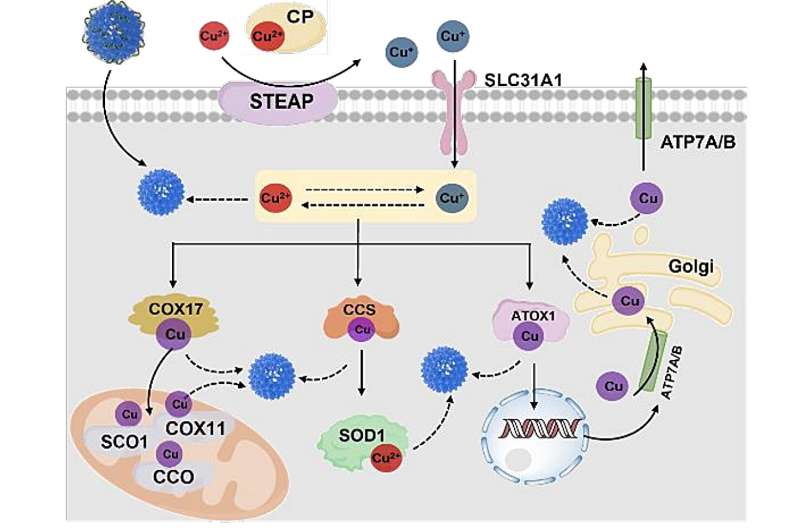This article has been reviewed according to Science X's editorial process and policies. Editors have highlighted the following attributes while ensuring the content's credibility:
fact-checked
peer-reviewed publication
trusted source
proofread
Scientists develop copper depletion strategy for advanced cuproptosis therapy

A team of researchers from Nanjing University has introduced an innovative approach to cuproptosis therapy by depleting copper levels in tumor cells, challenging the current paradigm that focuses on copper overproduction.
The study, published in Chemical Science, leverages mesoporous zinc sulfide (ZnS) nanoparticles as "copper nanoconsumers" to efficiently remove copper ions from cancer cells. This new method offers a targeted and safer alternative to existing therapies, which often rely on excessive copper accumulation and carry significant risks of toxicity and resistance.
The copper depletion strategy hinges on the unique properties of ZnS nanoparticles, which interact with intracellular copper ions through a cation exchange mechanism. This process disrupts key functions in cancer cells, including mitochondrial respiration and redox balance, leading to cell death.
By combining this copper-depleting action with a DNAzyme that inhibits glucose metabolism, the therapy attacks cancer cells on multiple fronts. The study further demonstrated that the approach enhances the efficacy of photothermal therapy, providing a robust and multifaceted cancer treatment.
This breakthrough represents a significant shift in the landscape of cuproptosis-based cancer therapies. By focusing on reducing copper levels instead of increasing them, the new method addresses critical limitations of current strategies and opens the door to more precise and effective treatments. With promising preclinical results, the copper depletion approach holds the potential to transform therapeutic practices and improve outcomes for cancer patients worldwide.
More information: Min Zhou et al, Copper depletion-induced tumor cuproptosis, Chemical Science (2024). DOI: 10.1039/D4SC04712E
Journal information: Chemical Science
Provided by Nanjing University



















